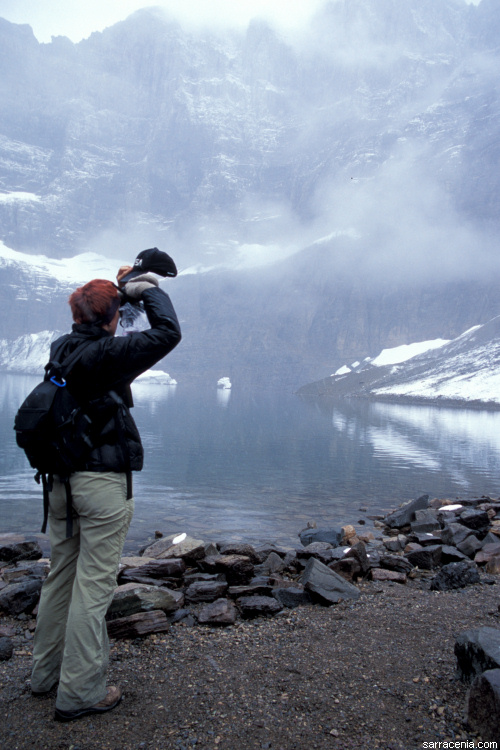
Iceberg Lake:
We reached Iceberg Lake without seeing any bears. Nor did we see the iceberg that had given
the lake its name. It had--like
so many of the park's glaciers--melted before we arrived.
The lake was obscured by dense, sound-killing fog. Every few minutes, we heard a rock clattering down a slope hidden in the gloom, but otherwise
we had little evidence of the topography around us. It was neat to see water at its triple point--solid, liquid, and vapor.
During one magical moment--captured above--the fog lifted to reveal the
glacially-carved rock wall (that geologists refer to as a cirque) circling nearly 270° of the lake.
Ironically, months after we returned home, I discovered an old herbarium specimen indicating that
Pinguicula macroceras has been collected from Iceberg Lake. The conditions were too slippery to explore for plants
even if we had known of their presence, but it is nice to think they may still be there.
The next morning we left Glacier for a site in Lewis and Clark County. I had in mind a mountain site that would require
several hours of driving to reach. Unfortunately, a winter storm blew in and as we drove I watched the snow
get deeper and deeper. At times it was a continuous blanket well over a foot thick. What was the point of looking for carnivorous plants
in such conditions? Still, I wanted to try!
Much to my joy, we were able to drive the entire distance along the gravel and mud roads to our trailhead, which
was remarkably free of snow. It was around freezing, but at least the ground was visible.